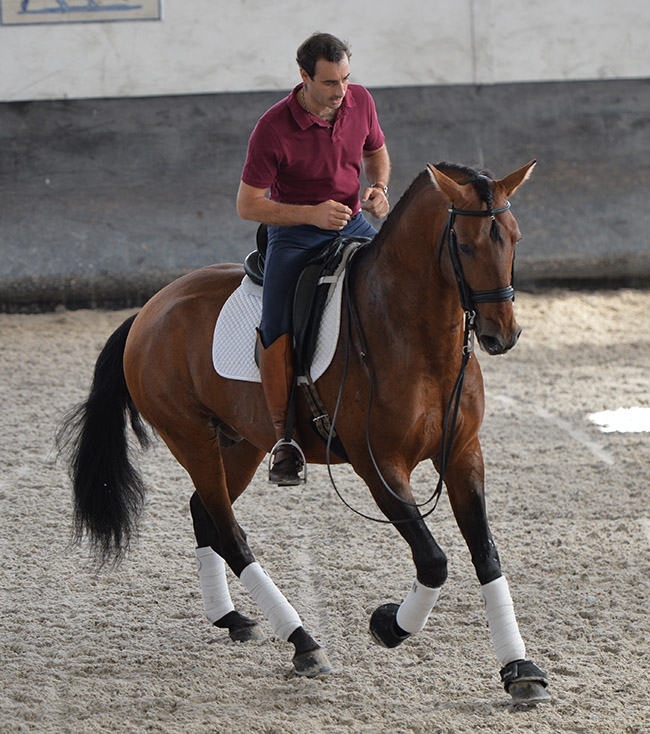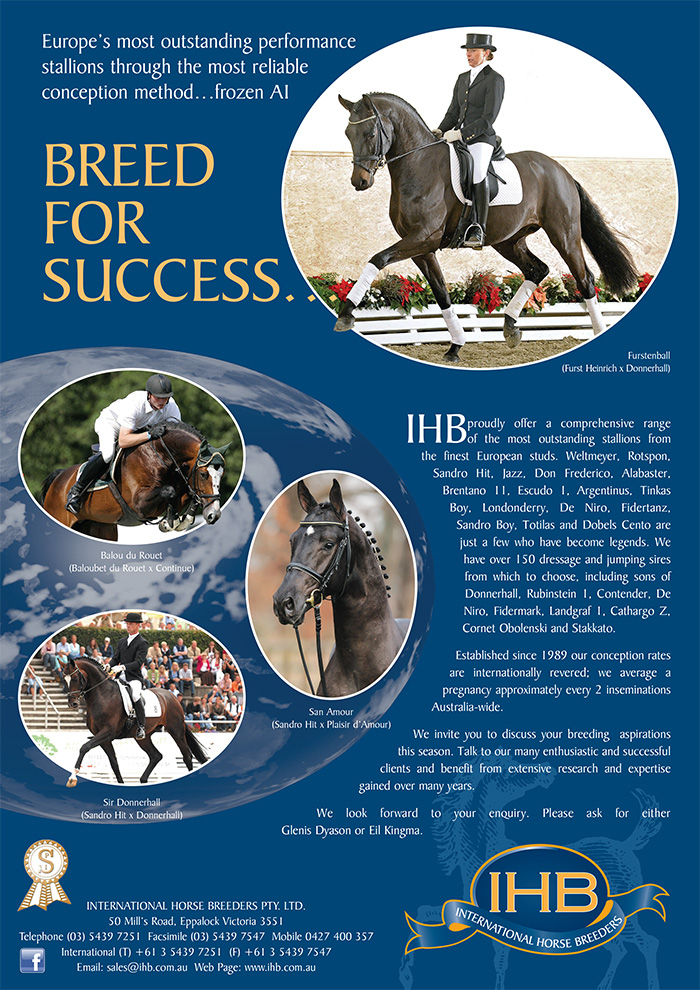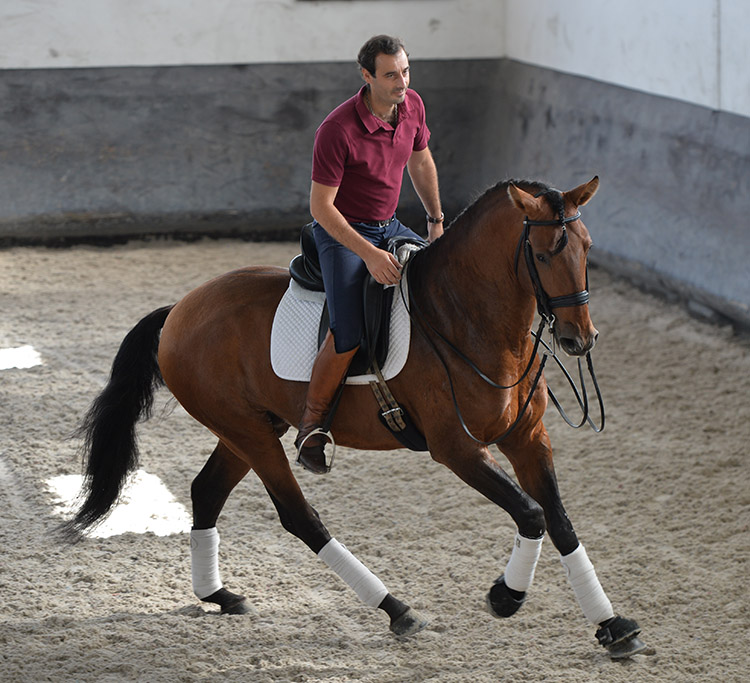
Visiting the home of Rodrigo Torres at his family’s Torres Vaz Freire Stud is a highlight of any trip to Portugal.
Watching Rodrigo work his horses is one of those moments when you reflect on just how important rhythm is in protecting the horse – for the moment you introduce tension, that is the moment in which perfect rhythm is lost. Here is a rider asking four and five-year-old horses to show a little piaffe, to try a few one times changes, or a baby pirouette, and all the time, the rhythm is perfect, and the minute Rodrigo drops the rein, the horse walks calmly from the little (30 by 15) school.
Certainly the shape and the style of the modern Lusitano is changing rapidly, and while the one I wanted was the grey Teddy Bear, the rest of the horses were a real modern type as you can see…
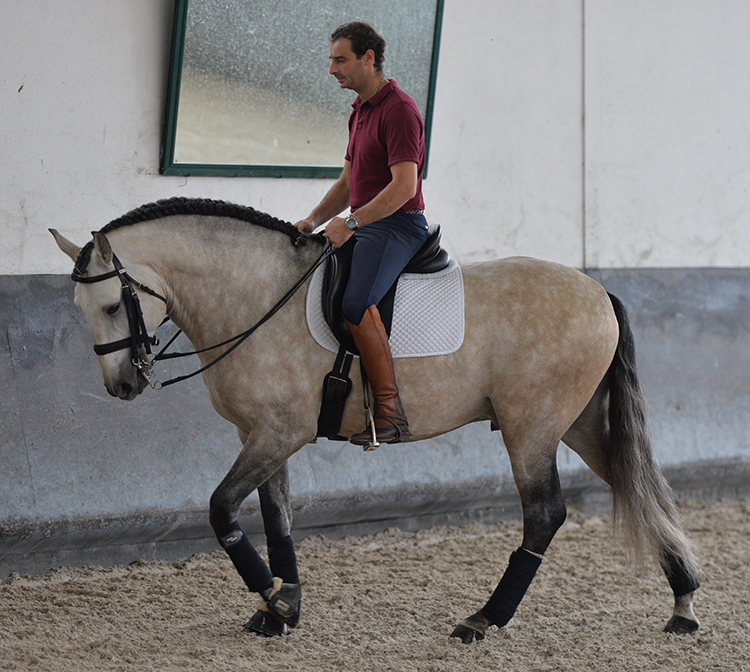
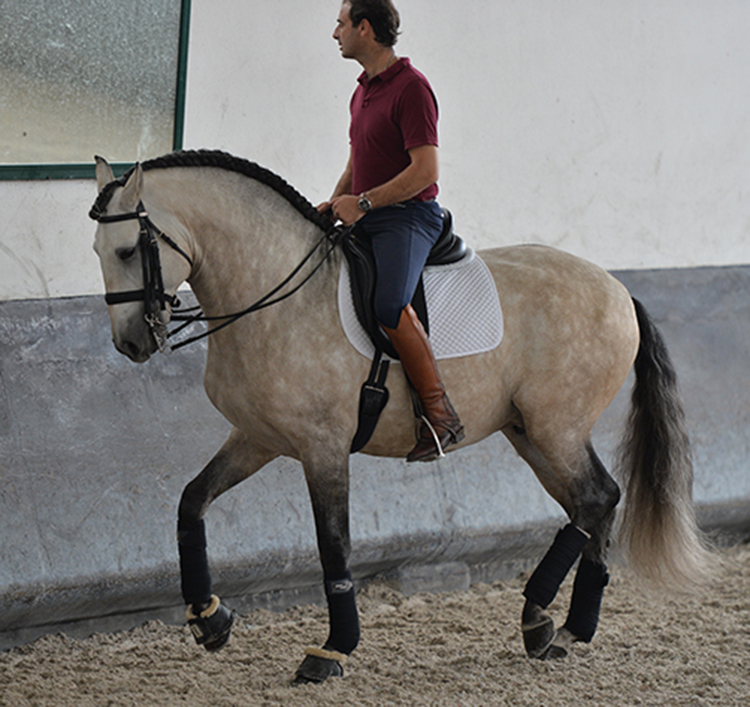
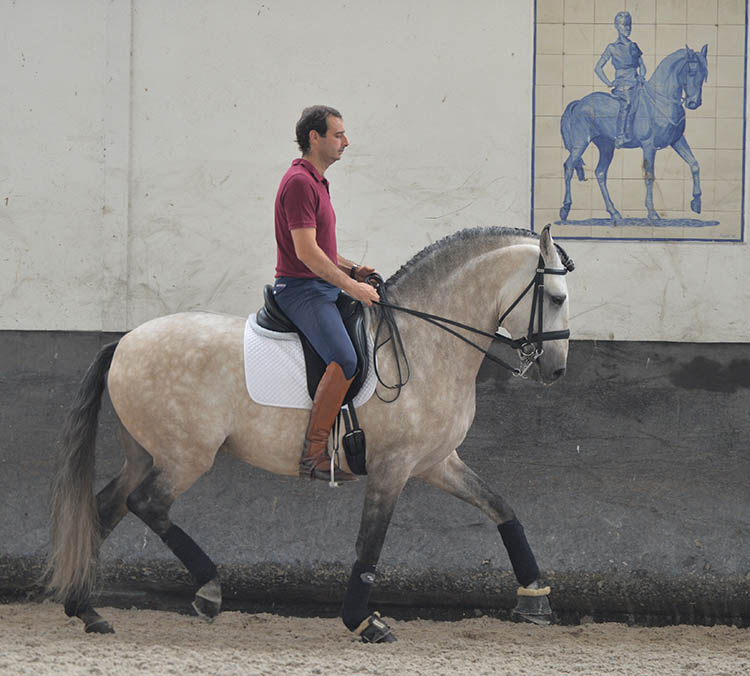
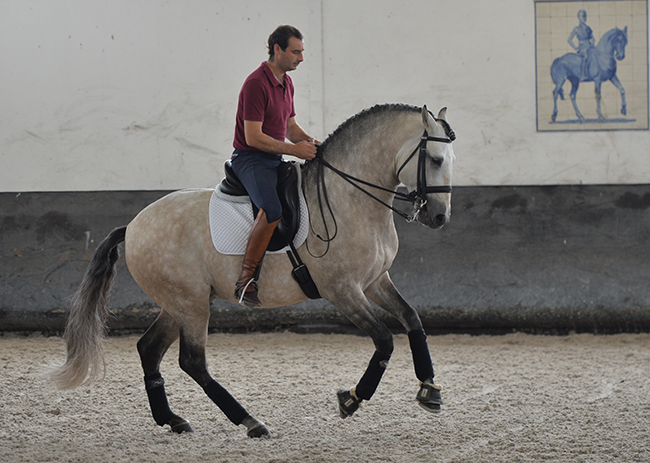
You were saying with the young horses that they need to be challenged, need to try to more difficult movements …
“I think when young horses have a lot of power and a lot of talent, it is important that every day you ask different things. Of course you need to make the basic work, they are very young, but this work needs to be less as training progresses, they need to understand this basic work quickly, then to improve this work to another level, then another level, because if you work these talented young horses with power every day trot and canter with the frame down and long, then I think these horses are bored. They need to learn in another way, and this is what I am searching for. Of course they need to be in balance, they need to be confident with your hand and with your leg, they need to understand that when you make an action with your hand or your leg, where they need to go, they need to understand what are your orders. But once they understand this, they need to make different work every day, this is my opinion.”
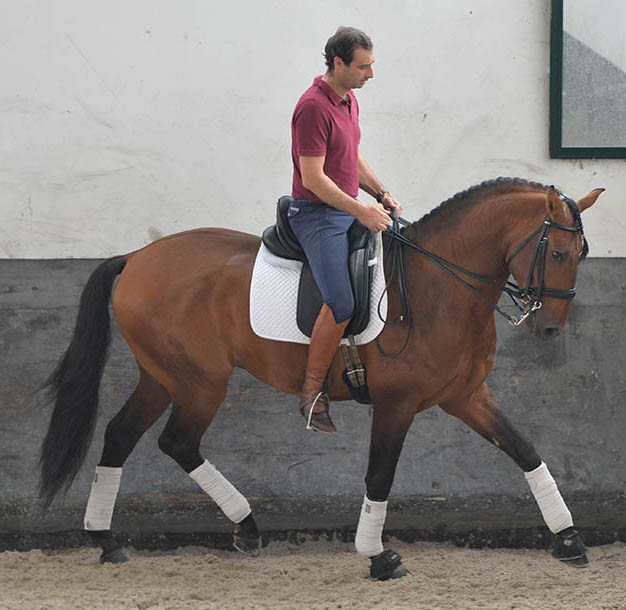
There was a point in the schooling of the young bay stallion that the horse started to get confused and bounce up and down on the spot, I suppose it was the point at which we mere mortals freak a bit and back off. Rodrigo’s response was very different, he sort of ‘enclosed’ the horse, blocking all the options except the one he wanted, which was to go quietly forward. I remember watching the late great Herbert Rehbein schooling a horse, and he did much the same, channeling the horse’s energy ever so smoothly in the direction he wanted, quietly closing the possibilities of resistance. It is a rare quality.
With the very talented, very tall young bay horse, at one time he seemed to get confused, but you just sat there and gave him only one channel to go down …
“Exactly. When they begin to be confused in an exercise, that is normal. The bay one is very young and he is already doing a little piaffe, passage, when they have so much information in their brain they can get confused, and it is important that you are strict with them – strict doesn’t mean strong. Today he started doing canter on the spot because he was confused, I am teaching the piaffe, I was searching for the balance of piaffe, so I just kept the pressure, pressure, pressure until he went into the balance of piaffe, and then I leave him alone. To say to him, it’s in here, in this place we are in peace.”
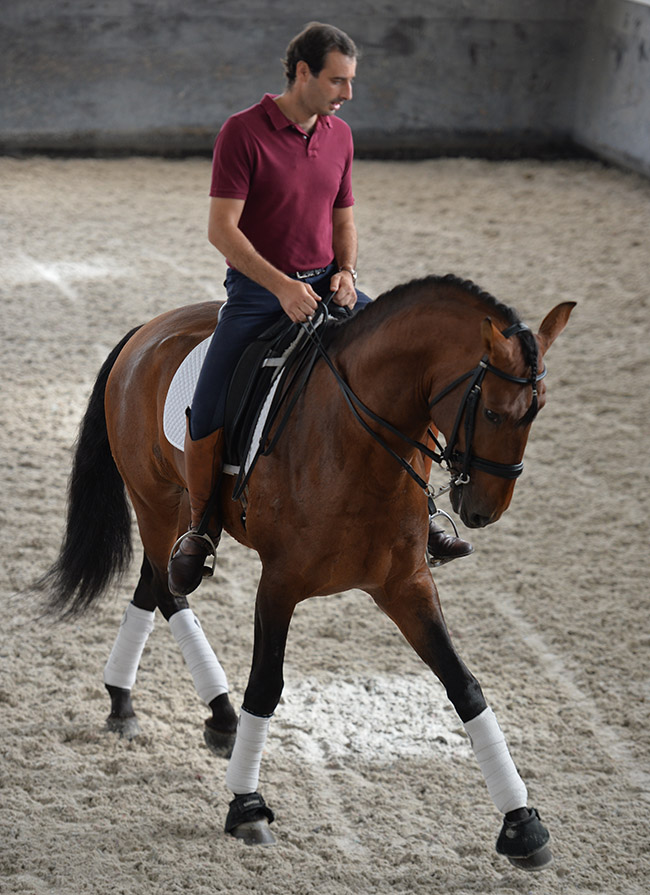
“And he begins to understand. It happened again later, then I did again pressure, and he went to the place I wanted him to go. In this way, they are in order.”
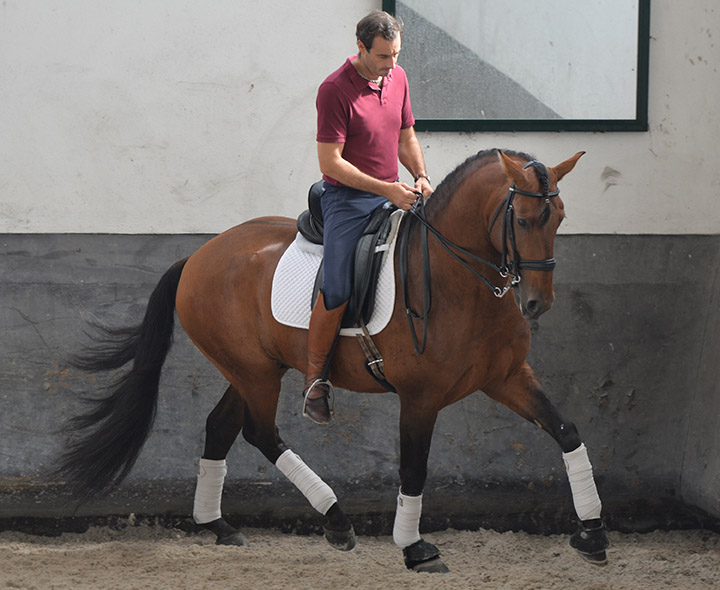
“In my opinion, riding has a lot to do with psychology, if they make the same mistake ten times, then it is not a mistake, it is something else, it is a habit. Then they learn in that place, they are able to escape from the balance that you want! But if they make that mistake once, and you push them strongly, just to say no, it is not there, and then they go to where you want them to be, and they feel comfortable and they understand, and then they respect you. I think it is important that the horse respects you, they need to be confident with you, but they need to respect you.”
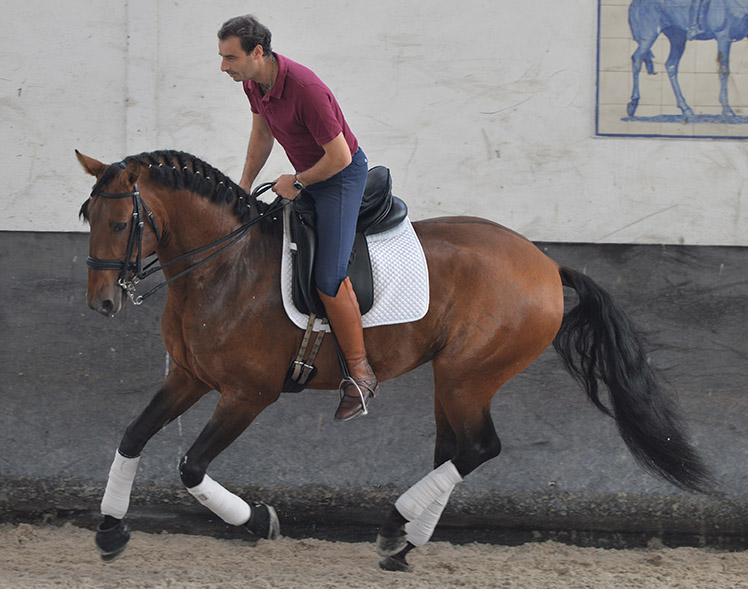
But when you finish working with your horses, they are so calm, they are so relaxed in their head – many people would say if you ask these things, like piaffe or one times changes, of a four-year-old horse then they will get very excited and nervous …
“But I think that is exactly the point, to teach horses is not just physical, it is psychological, and you need to know when you need to be strong, and when you are strong with them at the correct moment, they understand, and then they are calm. People might lie, but horses don’t lie – if at the end of the work, they are confident and relaxed with you, then the stronger actions you did in the lesson were well done.”
more follows…
“For example, I have many times made mistakes – I made strong actions with the horses and in the end, they didn’t understand, and in the end they said to me, what you did before was not correct. I need to think very fast what I did wrong, and I need to correct it. Many times I make mistakes, I am human, often you think you are doing well when you are not. It is important for riders to understand that when you are teaching horses, you can make mistakes, but you need to correct them very fast. It is the horse that tells you when you are doing well, or not doing well. If you do well, they go forward, if you are not doing it right, they don’t improve.”
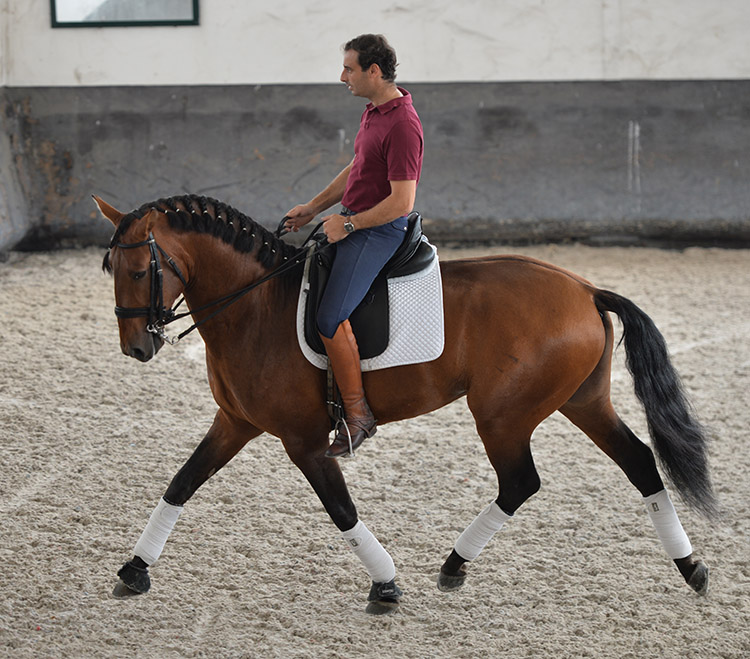
It is interesting the different types you showed us today, from the older type, the grey, to the very fine bay horse that if you told us, ‘this horse is from Oldenburg’ then we would believe you – it is interesting within the breed that you are getting modern dressage horses that are Lusitanos…
“For example, I have many times made mistakes – I made strong actions with the horses and in the end, they didn’t understand, and in the end they said to me, what you did before was not correct. I need to think very fast what I did wrong, and I need to correct it. Many times I make mistakes, I am human, often you think you are doing well when you are not. It is important for riders to understand that when you are teaching horses, you can make mistakes, but you need to correct them very fast. It is the horse that tells you when you are doing well, or not doing well. If you do well, they go forward, if you are not doing it right, they go backwards.”
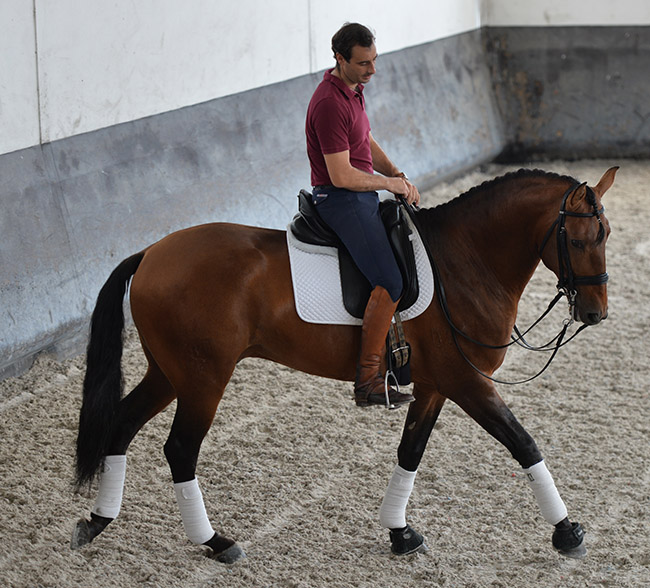
“Recently I had a German visitor here, he asked why I rode my young horses in double bridles. I answered that I want to keep the energy of my horses, and I need to control that energy that my horses have in them, so I can use it to train the movements I want, . They need the power to be able to learn these movements. I don’t want to hit them with whips and spur them. Then the visitor asked, ‘why don’t you lunge the horses and then you can ride them in snaffle bits?’ But that for me would be boring, to get on the horse that is not filled with energy that I can use, and just ride around in circles, boring for the horses too.”
